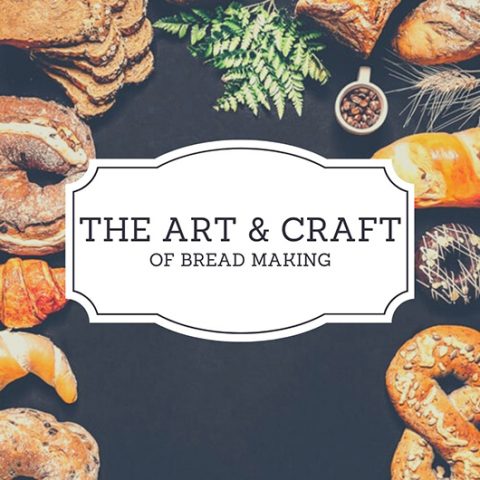
TRAM LINE B EXTENSION TO THE CAMPUS AND GRADIGNAN
28/01/2020THE ART & CRAFT OF BREAD MAKING

Bread is a quintessential part of the French meal, be it a humble repast of bread, cheese and wine or an elegant experience of haute cuisine. Baguette, epi, pain de campagne, brioche, fougasse, miche, and myriad other breads have graced the tables of this gourmet nation for centuries.
Author: Viktorija Todorovska for Fines Bouches Magazine
Bread is such an intrinsic element of French food culture that recently, French President Emmanuel Macron suggested baguette should be added to the UNESCO List of Intangible Cultural Heritage, which aims to protect traditions, such as music, dance, and cuisine, from the effects of globalisation.
French artisan bakers think that in addition to the name and shape, it is the ingredients and recipe of baguette that should also be protected. Mass-produced imitations, often made outside of France, threaten this centuries-old tradition.
A 1993 law specifies that traditional baguette cannot contain anything other than wheat flour, yeast, water, and salt. But even with these four ingredients specified, there is a world of difference in the texture, colour, and taste of a supermarket baguette and one made by an artisanal Boulanger.
So, what transforms these four simple ingredients into the crusty, delectable loaves that bakers worldwide aspire to?
Predictably, when a recipe is this simple, it is the quality of the ingredients that makes the difference between a mediocre product and an exceptional one. The ingredients must be fresh and of high quality to yield the crusty yet chewy perfection the world admires.
Another essential element is the know-how of the baker. Anyone who has tried to make bread at home knows how quickly this seemingly simple pursuit turns into hours and hours of research, dozens of attempts, many phone calls to friends and more than one loaf of inedible dough. Which is why a great boulangerie, one that consistently crafts loaves with a crusty outside and a chewy middle, is worth seeking fervently.
Michel Fiori’s boulangerie in Nice won the title of best boulagerie on M6.
When asked what his secret to great bread is, Fiori shrugs his shoulders and says simply,
“Time… we work with time. It takes us 20 hours to make a baguette.”
Twenty hours?!?
Yes, because the few simple ingredients he starts with need time to develop and achieve the complexity of flavor and the texture of a perfect baguette.
Each ingredient plays an important role.
The flour provides the carbohydrates used for fermentation and the proteins (gluten) that give the bread texture. Depending on the type of flour, the dough rises differently and gives bread with different textures.
Fiori uses only selected flours, with no additives or stabilisers. Pure grains, grown in a way that respects the environment. His preferred are Farine Label Rouge, a premium flour that gives the bread depth of flavor and also is environmentally friendly, and CRC (Culture Raisonée Controlée) flour, produced from 100% French grains of high quality in a way that benefits both humans and nature. The mills he buys his flours from only work with artisanal boulangers, not large distribution. That way, they can make great flour in a sustainable way.
To these high quality flours, Fiori adds very little yeast, only 1% (10 grams per kilo of flour) and 10% leavening (100 grams per kilo of flour). The leavening causes the fermentation that creates bubbles of CO2, which cause the bread to rise. Water brings it all together enabling the unravelling of the process of fermentation.
First the ingredients are mixed together in a large bowl and the dough is kneaded.
This seems like a simple step but it all starts here: the type and quality of the flour determines the intricacies of this part of the process. To make great bread, this step must be executed with precision and know-how: the baker needs to know the ingredients, how they interact, and how those interactions might change depending on weather and other conditions. He needs to also be able to modify this part of the process as necessary, observing how the dough comes together and tweaking things so the final product is consistent.
After the dough has achieved the desired consistency, it is left to rest for an hour. The experience and know-how of the boulanger are critical here: years of experience and experimentation have allowed Michel Fiori to developed a process that yields dough with depth of flavor and the right consistency.
After the initial rest period.
Fiori lets the dough slowly rise in the fridge for 18 hours at 10C. This long, slow rising ensures perfect development of the gluten chains for elasticity and also leads to a complex, rich flavor. The slow process gives the bread its final crust, in several shades of golden brown, and persistence on the palate.
Finally, the dough gets its final shape (including any cuts and decorations). This step is time-consuming. Fiori explains that in the past, when it was done by hand, the cutting and shaping of baguettes to fill one oven would take up to 14 hours. Now, machines can do this in about 2 hours. The recipe, of course, had to be adjusted and is still tweaked every time an ingredient changes for example from white to darker flour, from summer to fall, etc.
After the dough is shaped, come the final two steps: baking and cooling. This is when the dough loses moisture and becomes bread, forming a crust and the inside.
The temperature, usually 240 to 260C, is critical: at the beginning of the baking process, the dough continues to rise in the oven, the inside of the bread develops, and the crust is formed. The vapour injected into the oven allows the bread to cook without drying out and hardening.
After the bread comes out of the oven, it needs to cool to optimise texture and flavor.
This is the crowning moment of the 2-day process that leads to the perfect baguette: brown and crusty on the outside, with a chewy middle dotted with air bubbles. The crust of Michel Fiori’s baguettes has 4 shades of brown: from a light beige in the folds to deep rustic brown on the ridges.
When enjoying a freshly-baked baguette, warm and crusty, most of us don’t think of the fact that it took 2 days to make. It is possible to make a baguette in a lot less time, of course. But a baguette made in 2 hours can never have the same texture and flavor as the artisanal one, let to develop flavor and texture over many hours. The fast-rising baguette has no colour and little flavor, so of necessity it contains additives, including sugar, to develop the golden colour so appealing to the eye.
A skilled labour.
In a globalised world, where physically demanding jobs are not in high demand, the biggest challenge for artisanal boulangeries is skilled labour: it takes years to become a boulanger. Fiori’s assistant baker, after 4 years of working at the bakery, can handle the mixing and kneading of the dough, but not yet the oven. That takes a lot more experience, knowing the dough intimately, knowing the oven and all the conditions that can affect it.
Bread is a living thing and a good boulanger knows how the bread will change after a customer buys it. Michael Fiori likes to study his own bread: he leaves a baguette at his house for a couple of days, even more, to see what happens. The bread loses moisture, but it stays fresh and edible for a long time, the sign of excellent bread, one made with passion from high quality ingredients.
About the author: This article was written for Fines Bouches Magazine by Viktorija Todorovska. Viktorija is a journalist, sommelier and author of numerous cookbooks. You can find more articles like this, in French, over on the Fines Bouche Magazine website.



